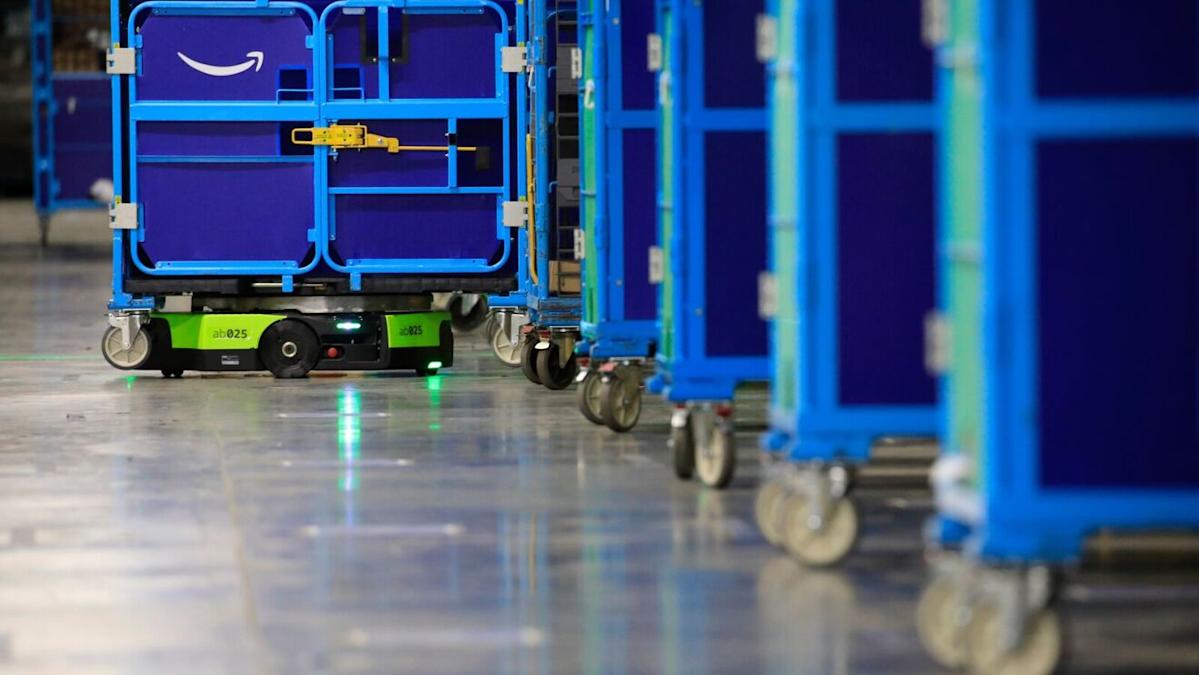As job replacement fears loom in the minds of American workers because of artificial intelligence and automation, Amazon is reportedly reconsidering its future hiring plans.
The New York Times reported Tuesday that it had obtained leaked internal documents from Amazon, which projected that, by using automation and robotics, the company could avoid hiring 160,000 people that it would have needed by 2027. The outlet reported that, per the documents, following through with those plans would save Amazon about 30 cents per item it packs, picks and delivers to a consumer.
More from Sourcing Journal
According to the Times, that same strategy would lead to 600,000 jobs Amazon wouldn’t need to hire by 2033. The Times’ reporting did not include any information about axing jobs for active Amazon workers.
A company spokesperson told Sourcing Journal via email that Amazon plans to hire 250,000 people during the holiday season; the Times noted that Amazon did not share how many of those holiday roles would become permanent.
Kelly Nantel, a spokesperson for Amazon, said the documents the Times reported on lack organization-level significance.
“Leaked documents often paint an incomplete and misleading picture of our plans, and that’s the case here. In our written narrative culture, thousands of documents circulate throughout the company at any given time, each with varying degrees of accuracy and timeliness,” Nantel said in a written statement. “In this instance, the materials appear to reflect the perspective of just one team and don’t represent our overall hiring strategy across our various operations business lines—now or moving forward.”
Amazon has been bullish on robotics and automation in its warehouses. Earlier this year, the company announced that it has deployed a million robots globally, which brings the number of robots close to parity with the roughly 1.2 million workers the company employs in the U.S. and its estimated 1.5 million employees globally.
When it made that announcement, Amazon also shared that it had developed robot-wrangling technology it calls DeepFleet, which it uses to orchestrate robots’ movements throughout the warehouse. At the time, the company said DeepFleet helps facilitate “less congestion, more efficient paths and faster processing of customer orders.”
The e-tail giant has started opening facilities that rely heavily on robotics, like one it opened just over a year ago in Shreveport, Louisiana. The facility, the company boasted at the time, relies on AI systems and “10 times more robotics” than a traditional fulfillment center to pick, pack and fulfill customers’ orders rapidly. At the time, the company said that the facility would eventually employ about 2,500 people. Today, that figure stands around 2,000, the company said, noting that automation doesn’t necessarily mean total human elimination from workspaces. The company deploys at least five kinds of robots in that facility, including an autonomous mobile robot model it calls Proteus.
Beyond its warehouse automation efforts, Amazon has also reportedly been testing humanoid robots for warehouse operations and home deliveries, even going as far as to build a “humanoid park” in San Francisco before testing the robots on real delivery routes.
Beyond traditional warehouse robots, Amazon has already deployed drones for delivery as part of its Prime Air program. Customers in Texas and Arizona can receive parcels from the flying delivery liaisons, and Amazon has received beyond visual line of sight (BVLOS) permissions from the Federal Aviation Administration (FAA), which means the drones can, theoretically, start to scale for delivery.
But the company said that it continues to invest in upskilling its employees to adjust for the ways technology impacts business. For instance, it cited the Mechatronics and Robotics Apprenticeship program as an initiative that works to help bring new opportunities to employees. What’s more, the company said, it leverages “efficiency gains in one area to enable [it] to invest in other areas—both existing and entirely new ones—that create additional value for customers.”
